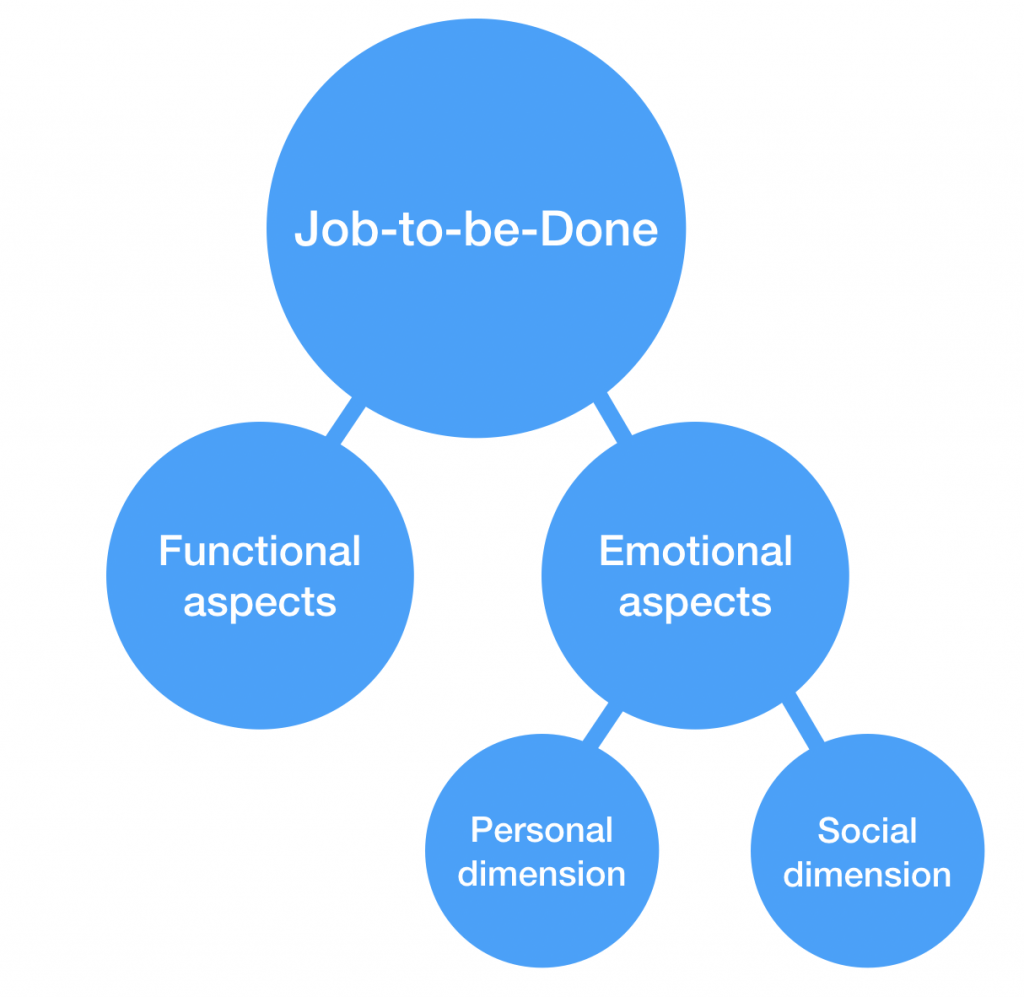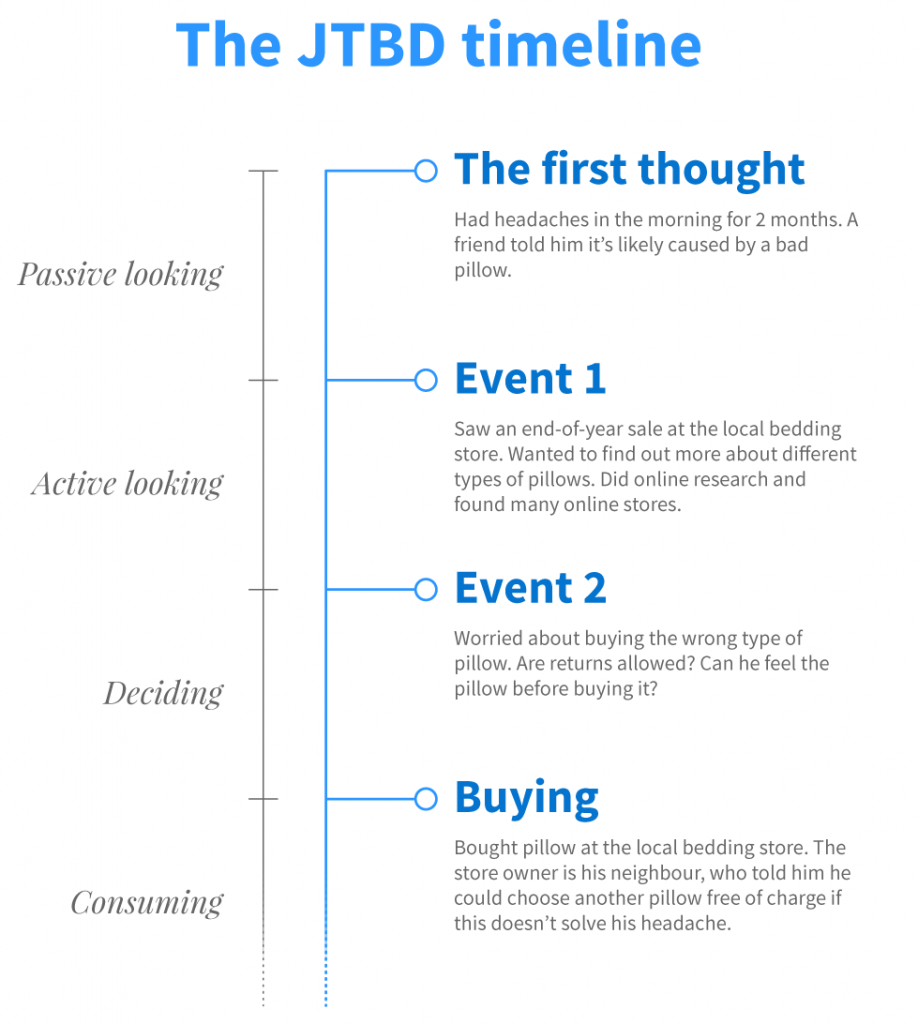6x faster initiative planning with AI - Introducing Productboard Spark.
Join the waitlistSearch & analyze customer feedback 6x faster. Productboard Spark - the AI for PMs.
Join the waitlist6x faster initiative planning with AI - Introducing Productboard Spark.
Join the waitlistSearch & analyze customer feedback 6x faster. Productboard Spark - the AI for PMs.
Join the waitlistWhen you’re designing a product, your goal is to deliver something that customers want. Unfortunately, that’s a fairly broad statement making it something nice to say but far more challenging to put into practice. When considering what solution you can build to solve a big enough group’s needs, you must have a strong sense of what those needs are.
If you can’t truly identify user needs, you run the risk of building and marketing a product that goes nowhere. Take Google Glass as an example. It’s a remarkable product that couldn’t quite find traction beyond its initial set of technology enthusiasts. Whether you look at it as a marketing or product development problem, the average person seemed to conclude that they didn’t need it. But is there a need that Google Glass could have solved?
There are plenty of frameworks out there to help you focus and drill down on user needs. Recently, the Jobs-to-be-Done (JTBD) framework has emerged as a popular one to get to the heart of a user’s needs by reframing a user’s relationship to their problem.
“If I had asked people what they wanted, they would have said faster horses.” – Henry Ford
Henry Ford’s quote (though there is some argument whether he truly said this or not) gets to a key point about why the JTBD framework is helpful. When we talk to customers about the problems they’re experiencing, they’ll often speak in terms of their proposed solution. But it’s your job to develop a solution, not theirs. Ford understood that you have to get past the “noise” of their solution to get to their actual problem.
The way the JTBD framework reframes the connection between a user and user’s problem or need is by phrasing the need as a job that the user wants to get done. Your product is what the user “hires” to get that job done.
Let’s revisit Henry Ford’s quote above. Instead of saying that someone needed a faster horse (the solution), you could say that they were hiring a horse to get from Point A to Point B. In this case, the job to be done is getting from Point A to Point B. Implied in Ford’s quote though, is that the job to be done is to get from Point A to Point B faster.
The job to be done is fundamentally is what the user is trying to accomplish. What Ford’s quote implies is that most people will fall into the trap of thinking that what the user is trying to accomplish is to ride a faster horse. So if you try to solve for that problem, you won’t think much beyond horses—unlike Ford, who would go on to revolutionize not only the industry but society as well.
One of the fundamental things to understand jobs in the JTBD framework is that they are relatively stable over time. As technology progressed over the years, people still have the basic need to get from Point A to Point B. This is a useful concept to maintain the consistency of your overall product strategy.
What has changed over the years is the types of products people have hired to get that job done: faster cars, trains, planes, electric scooters, and more. People generally are seeking out products and services to help them get jobs to be done faster or cheaper, depending on more specific characteristics of the situation.
It’s important to remember that the job to be done is solution agnostic. Embracing this idea opens your thinking to bold new ideas. It’s also helpful to keep this in mind as you interview customers. They will always offer a solution when asked about a problem they’re facing. So you need to remember that the solution and their needs are separate things.

When looking at Jobs-to-be-Done, we should also consider its subcomponents as well.
In getting from Point A to Point B, the functional aspect is the travel to and arriving at Point B. If the distance is very far, then a functional aspect may lead to buying an airplane ticket as opposed to driving a car.
A personal emotional job aspect could be the user’s commitment to the environment, which may lead her to either use an electric car or a bike. Another personal emotional aspect may be a health consideration, which may lead someone to use a bike or to walk.
A social emotional aspect may lead to someone buying a fancy high-end car that will give them some visible social status.
Discover the job
Naturally, the first thing you need to do is discover the job to be done. The most straightforward way is to talk to customers. These aren’t quick conversations. You need to be prepared to sit with them and have an involved enough conversation that will dive deep into what job they’re trying to accomplish. Your ideal targets are customers who recently bought your product or a similar product, perhaps from a competitor.
The best way to chart your conversation with a customer is to start with their thinking at the point of purchase and work your way back to their original intent.
 Source: Interactive Mind on Medium
Source: Interactive Mind on Medium
Once you’ve completed your questions, you should be able to articulate when a user first realized they had a problem, how they started passively looking for a solution, what evaluation criteria they used when making a buying decision, and how they made that purchase. For more detailed information about designing these interviews, see Teo Yu Sheng’s post on Interactive Mind.
The most critical thing to do here is to understand what causes someone to buy something.
Craft the statement
Once you’ve gone through and analyzed your interviews, craft a simple statement capturing each Job-to-be-Done. A straightforward structure is to craft it is:
Let’s look at some examples.
Some time ago, Apple revolutionized the music industry. The statement below could be a JTBD that helped them devise their ecosystem of a music store and music device.
Previous to the iPod explosion, the average user would go to a music store, browse CDs, purchase some of them, go home, and listen to the CD in their player. If you wanted to improve this process without really crafting a Jobs-to-be-Done statement, you might enhance the retail checkout function, or you might add listening stations in the stores. You might even create a higher quality CD with better audio.
But if you’re Apple, and you’re looking at the JTBD of wanting to listen (and implicitly buy) music, you might create something completely new. Personally, I typically only bought an album for about 3 songs. I assume Apple did plenty of research to determine the Clarifier, making their musical endeavors a huge success.
Here are other examples:
Craft outcome statements
When you have your Jobs-to-be-Done clarified, consider the related outcomes. Zbigniew Gecis groups these outcomes in the following way:
This grouping will help further clarify how your potential solution aligns with the job that the user needs to accomplish.
The structure is similar to the JTBD but contains a little more nuance:
As an example:
In the above example, I’m talking about my Instant Pot. When I first used it, I thought it wasn’t cooking much faster for a lot of recipes I’ve made using a regular pot. But I quickly realized that I could throw ingredients in there, turn it on, and pay no attention to it again until it finished. I didn’t need to stir it, watch the heat, or anything. I could focus my time on the other JTBDs needed to get dinner ready for the family.
Once you’ve clarified your JTBDs and your outcome statements, you’ll have a much clearer view of what solutions would best serve those needs. You’ll have greater certainty about what to build next and why.
Perhaps the most famous example of the JTBD framework put into motion is Clay Christensen’s milkshake case study. He talks about how he was able to work with McDonald’s to better market their milkshakes based on why early morning commuters were buying them. Using the framework’s findings, McDonald’s was able to drive more sales.
Another way to illustrate JTBD may be to look at the difference between Adobe Premiere and Apple iMovie. I’ve used both, and in both cases, I “hired” each to do a different job. I used Adobe Premiere to create a high production quality video used for marketing. Its many unique features helped me manipulate lighting, color, and audio. I used Apple iMovie to create a fun video to share with my family and friends. I didn’t need any exceptional functionality, and most of the images and footage were already on my iPhone. Both are video creation software, but each solves a different JTBD.
In the beginning, I mentioned Google Glass as a product that didn’t find traction with a broad audience. Google Glass may yet again find new life at some point and we might predict what that might look like through the JTBD framework.
Instead of focusing on a broad audience, a surgeon may use Google Glass to watch some kind of video guidance while simultaneously keeping her eyes on the surgery she is performing. A child with learning disabilities may use augmented reality while constructing a LEGO set. By using the JTBD framework, Google could develop and market a version of Google Glasses that finds success.
As you think about your product and market, use the JTBD framework to determine why users make their purchases by reframing their relationship to their needs.
. . .
Productboard is a product management system that enables teams to get the right products to market faster. Built on top of the Product Excellence framework, Productboard serves as the dedicated system of record for product managers and aligns everyone on the right features to build next. Access a free trial of Productboard today.